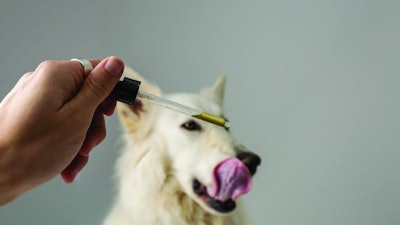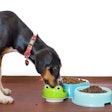
Prior to the U.S. 2018 Farm Bill, the Controlled Substances Act (CSA) did not differentiate between marijuana and hemp, and nearly all cannabis was considered a Schedule I substance controlled by the Drug Enforcement Administration (DEA). In December 2018 the Farm Bill was signed into law, removing hemp (defined as cannabis and derivatives of cannabis with no more than 0.3% THC on a dry weight basis) from the definition of marijuana in the CSA, while preserving the U.S. Food and Drug Administration (FDA)'s authority over hemp products.
In late 2018, FDA put three hemp-seed-derived food products through its Generally Recognized as Safe (GRAS) process, paving the way for hulled hemp seed, hemp seed protein powder and hemp seed oil to be legally used in the U.S. food supply. However, to date the FDA has not done the same with CBD, even though interest in CBD as a drug has been steadily climbing for years, and particularly since it entered into the limelight after the Farm Bill passed.
The regulatory complexities mean that currently, CBD can’t be used in a pharmaceutical product nor can it be used as a food ingredient, which is why, for now, CBD exists only in the supplement space in the pet food world. Furthermore, given that hemp was lumped in with marijuana until less than four years ago, research on the effects of any part of hemp on humans or animals still has some significant gaps that need filling.
Education is key: Starting with the basics
One of the primary challenges (and, ultimately, one of the barriers to regulatory and consumer acceptance) when it comes to CBD products in the pet space is lack of knowledge.
“I think for most people who are first stepping into the space and [have questions about] cannabinoids, hemp, etc., just that differentiation between CBD and THC is very important,” said Justyna Kulpa, Ph.D., senior scientist, human and animal research program at global cannabis company Canopy Growth Corporation. “A lot of people group these two together — they think all cannabis is the same, all of it is intoxicating, all of it is recreational, and that couldn’t be further from the truth. So even basic research proving the differences can help veterinarians or the general public about the nuances in the space.”
Canopy has done some of that basic research, publishing three peer-reviewed articles relating to dosing safety in dogs and cats that now serve as the basis for some of their other work (see sidebar, “Pet-related CBD research: Now and in the future”).
“We completed what we think is the industry’s largest CBD safety study,” said Kulpa. “We administered CBD chews daily to dogs for six months. Not only is this the longest study of its kind, it was placebo controlled and it tested multiple concentrations of hemp-derived CBD. We included male and female animals; we also explored plasma levels of CBD throughout the dosing period, as well as a number of other safety signals. The results of the study were very promising, and we hope to make the results available soon.”
Those in the CBD space are willing to put in the work because they believe the evidence of efficacy is there — and that evidence is what will open doors to opportunities for CBD in pet products.
“Consumers are more and more educated in the area of cannabinoids for their pets, which is wonderful to see, and they are asking for and eager for proof that a pet CBD + CBDA product works and has been thoroughly researched, so it is of great importance to consumer acceptance,” said Amanda Howland, co-founder of ElleVet Sciences, which provides CBD oil and chews for dogs and cats. “For veterinarians, it is essential for acceptance, and they need to see scientific proof that a product is both effective and safe. The more research and scientific data that we can provide to the FDA, or to any regulatory body, the better so that we can together create standards and guidelines in the cannabinoid industry. Our goal as a company is to provide education and data to all so that we can move the industry forward, and I think that we have changed the CBD +CBDA industry for the better since we first started our research in 2016.”
Roadblocks: Misconceptions, regulatory pushback
Although hemp itself is no longer classified as a Schedule I narcotic in the U.S., those working with CBD say there are decades of stigmas to untangle when it comes to the differences and relationships among hemp, marijuana, CBD and THC.
“There have been hundreds of different projects and research studies that have happened since [the Farm Bill],” said Julianna Carella, founder and CEO of Treatibles, which provides CBD pet products. Carella herself has been working in the cannabis space since 2008, when she established Auntie Dolores, one of the first five medical cannabis brands in California, USA. “But I think probably the biggest roadblock we experience is just the fact that there’s still a serious stigma against it.”
Theoretically, research into the efficacy and safety of CBD use for pets that yields positive results should help regulatory bodies decide how to expand legal avenues of use, but according to Carella the evidence is already there — and nothing has changed yet. Treatibles is a member of the National Animal Supplement Council (NASC), a non-profit trade association whose mission is to “promote the health and well-being of companion animals and horses given animal health supplements by their owners, and to protect and enhance the animal health supplement industry.” Membership is partly contingent on compliance with mandatory, regular reporting of any adverse events involving a member’s products or ingredients. This means NASC has a significant database of ingredient-specific adverse events, including for “hemp and hemp-derived compounds.”
“The NAERS system is the most advanced system of post-market surveillance in the world for products that are similar to human dietary supplements, marketed for dogs, cats and/or horses,” said Bill Bookout, president of NASC. “The system tracks, basically real time, over 6,500 products and over 1,400 individual ingredients, including hemp/cannabinoids. The outputs of the system are ingredient risk reports for AERS (the Adverse Event Reporting System), both serious and non-serious, and compares it against the number of products shipped to the first point of distribution. These reports would not be a substitute for safety; however they do monitor and track risk of use, which I would argue is more indicative of safe than a true safety study because the exposure is so much greater when products are in the mass market.” (For more on the NAERS system, see sidebar “Tracking product safety through NASC.”)
As of June 2, 2022, an NASC ingredient risk report of hemp and hemp-derived compounds pulled from the NAERS system included data compiled from 1,039 registered products containing ingredients in that category. The report lists minimum and maximum usage information for dog, cat and horse products and tracks reported adverse events beginning in 2010 for dogs, 2011 for horses and 2012 for cats. The total number of adverse events reported from 2010 through June 2, 2022 was 1,448 — a report rate of 2.03 per 1 million administrations sold. The number of serious adverse events reported in the same timeframe was nine. The total number of reported administrations sold (which, according to NASC methodology, is likely to be very close to number of administrations consumed) was 714,636,284.
According to Carella, this data should be something FDA sees favorably, or at least considers, but that doesn’t seem to be the case.
“FDA is really focused on companies making egregious claims, and they spend a lot of time telling us what we can’t do and not a lot of time telling us what we can do,” she said. “They don’t support this category, they don’t support CBD, it’s been a big headache for regulators to have to deal with all this, and at the end of the day they’d probably prefer to just not have to deal with it at all.”
Continued research will be key
With all the complexities still surrounding the use of CBD in both human and pet products, these challenges aren’t likely to ebb any time soon. Still, those who work with CBD products hope that continued research is the answer.
“If we had more research, people would see all [the benefits] but it’s a process that just takes time,” said Carella.
Fortunately, there’s plenty more research on the horizon.
“I think a lot of people think cannabinoid research is completely new, but there are actually over 40,000 peer-reviewed publications now that cite cannabis or cannabinoids,” said Kulpa. “There’s a big need to take that information and bring it to the general public. I think most people are not reading peer-reviewed publications — I think bridging that gap between what we already know and communicating that to the general public is going to become very important.”
Pet-related CBD research: Now and in the future
Link TBD
Tracking product safety through NASC
Link TBD


















